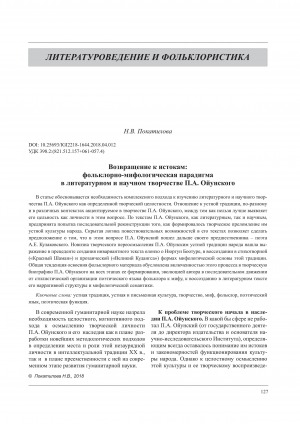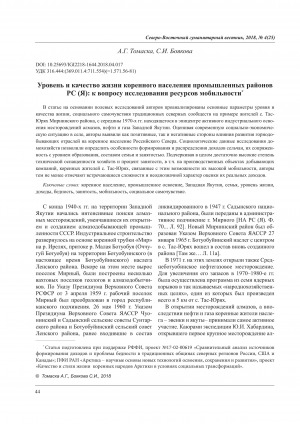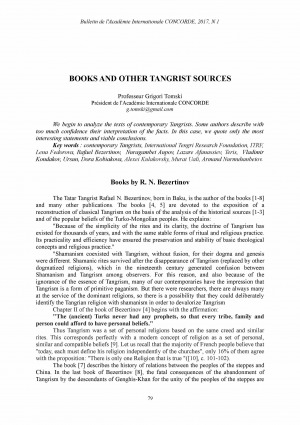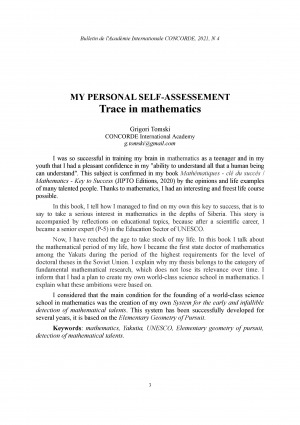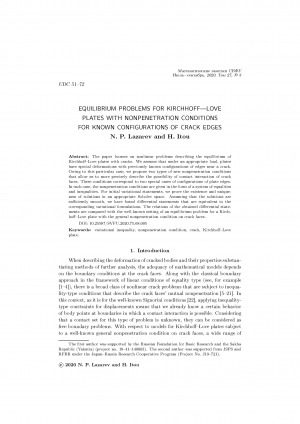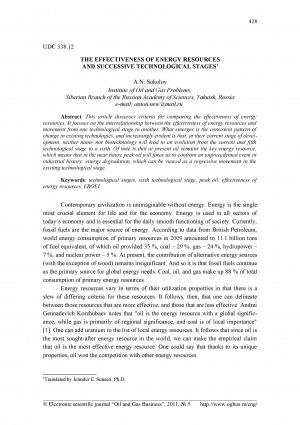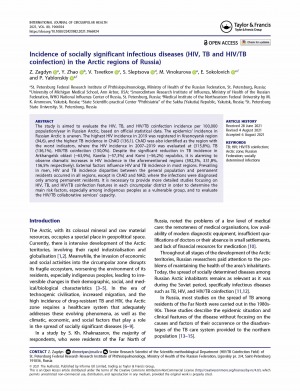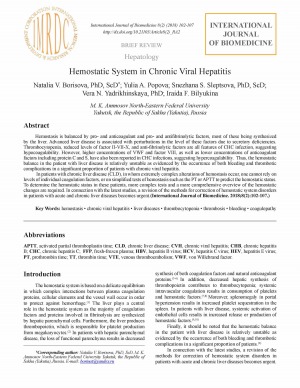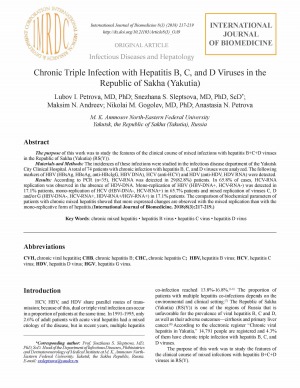Количество страниц: 8 с.
- Общественные науки. Образование > Этнография. Обычаи. Жизнь народа. Нравы,
- Языкознание. Филология. Художественная литература > Литература. Литературоведение > Диссертации. Трактаты. Научная полемика,
- НАУКА ЯКУТИИ > ЯЗЫКОЗНАНИЕ. ФИЛОЛОГИЯ. ЛИТЕРАТУРОВЕДЕНИЕ. ХУДОЖЕСТВЕННАЯ ЛИТЕРАТУРА > Литература. Литературоведение,
- НАУКА ЯКУТИИ > ОБЩЕСТВЕННЫЕ НАУКИ > Этнография. Обычаи. Жизнь народа. Нравы.
The article substantiates the need for an integrated approach to the study of the literary and scientific creativity of P. Oyunsky as a certain creative integrity. The attitude of the oral traditions, in different ways and in different contexts focused in the work of P.A. Oyunsky, meanwhile, could not be better reveals his integrity as individuals in this matter. According to the texts of Oyunsky, both literary and scientific, an attempt was made to consistently reconstruct how the creative refraction of the oral culture of the people was formed. Hidden logic of narrative possibilities in texts Oyunsky allows us to make an assumption that in this matter he went further than his predecessor, the poet A.E. Kulakovsky. Novelty creative interpretation of P.A. Oyunsky oral traditions of the people found expression in the precedent of creating invariato text Olonkho about Nurgun Bootur. recreating in verse (“Red Shaman") and prose (“the Great Kudangsa”) forms the mythological basis of this tradition. The General trend of development of folklore material is due to the inclusion of this process in the creative biography of P. Oyunsky at all stages of its formation, the evolution of the author in a consistent movement from the stylistic organization of the poetic language of folklore to the myth, to the reconstruction in the literary text of its narrative structure and mythological semantics.
Покатилова, Н. В. Возвращение к истокам: фольклорно-мифологическая парадигма в литературном и научном творчестве П. А. Ойунского / Н. В. Покатилова // Северо-Восточный гуманитарный вестник. – 2018. – N 4 (25). – С. 127-134.
DOI: 10.25693/IGI2218-1644.2018.04.012
Количество страниц: 7 с.
In the article, based on the field researches of the authors, the main parameters of the level and quality of life, social well-being of traditional Northern communities are analyzed on the example of the residents of village Tas-Yuiyakh, Yuryakh, Mimy area, since the mid-1970s, it was located at the epicenter of the active industrial development of diamonds, oil and gas in Western Yakutia. Assessing the current socio-economic situation in the village, the authors identified both positive and negative aspects of the impact of the development of mining industries on the indigenous population of the Russian North. Sociological data of household research allowed to define the features of the formation and distribution of income of villagers, their relationship with the level of education, family composition and employment. In general, a sufficiently high degree of technical equipment of farms and the percentage of employment, including at the production facilities of mining companies, indigenous residents of Tas-Yuiyakh, the associated opportunities for their high mobility, the authors, however, note the difficulties encountered and the ambiguous nature of the assessment of their real incomes.
Томаска, А. Г. Уровень и качество жизни коренного населения промышленных районов РС (Я): к вопросу исследования ресурсов мобильности / А. Г. Томаска, С. И. Боякова // Северо-Восточный гуманитарный вестник. – 2018. – N 4 (25). – С. 44-50.
DOI: 10.25693./IGI2218-1644.2018.04.017
Количество страниц: 20 с.
Приступаем к анализу текстов современных тангристов. Некоторые авторы слишком уверенно описывают свою интерпретацию фактов. При этом мы приводим только самые интересные утверждения и жизнеспособные выводы.
Tomski, G. V. Books and other Tangrist sources / Grigori Tomski // Bulletin de l’Académie Internationale CONCORDE. - 2017. – N 1. – С. 79-97.
Количество страниц: 64 с.
- Томский Григорий Васильевич > Труды, статьи,
- Математика. Естественные науки > Математика,
- Краеведение. Археология. География. Биографии. История > Биографии. Генеалогия. Геральдика,
- НАУКА ЯКУТИИ > МАТЕМАТИКА. ЕСТЕСТВЕННЫЕ НАУКИ > Математика,
- НАУКА ЯКУТИИ > КРАЕВЕДЕНИЕ. ГЕОГРАФИЯ. БИОГРАФИИ. ИСТОРИЯ > Биографии. Генеалогия. Геральдика.
Tomski, G. V. My personal self-assessement : trace in mathematics / Grigori Tomski ; CONCORDE International Academy // Bulletin de l’Académie Internationale CONCORDE. - 2021. – N 4. – С. 3-65.
Количество страниц: 14 с.
Lazarev, N. P. Equilibrium problems for Kirchhoff–Love plates with nonpenetration conditions for known configurations of crack edges / N. P. Lazarev, H. Itou // Математические заметки СВФУ. — 2020. — Т. 27, N 3 (107), июль-сентябрь. — С. 52-65
DOI: 10.25587/SVFU.2020.75.68.005
Количество страниц: 12 с.
Sokolov, A. N. The effectiveness of energy resources and successive technological stages / A. N. Sokolov // Нефтегазовое дело. - 2011, N 5. - С. 428-438.
Количество страниц: 9 с.
- Прикладные науки. Медицина. Ветеринария. Техника. Сельское хозяйство > Медицина > Патология. Клиническая медицина > Фтизиатрия,
- Прикладные науки. Медицина. Ветеринария. Техника. Сельское хозяйство > Медицина > Патология. Клиническая медицина > Венерология,
- НАУКА ЯКУТИИ > ПРИКЛАДНЫЕ НАУКИ. МЕДИЦИНА. ТЕХНИКА. СЕЛЬСКОЕ ХОЗЯЙСТВО > Медицина > Патология. Клиническая медицина > Фтизиатрия,
- НАУКА ЯКУТИИ > ПРИКЛАДНЫЕ НАУКИ. МЕДИЦИНА. ТЕХНИКА. СЕЛЬСКОЕ ХОЗЯЙСТВО > Медицина > Патология. Клиническая медицина > Венерология.
Incidence of socially significant infectious diseases (HIV, TB and HIV/TB coinfection) in the Arctic regions of Russia) / Z. Zagdyn, Y. Zhao, V. Tsvetkov [and etc.] // International journal of circumpolar health. - 2021. - Т. 80, N 1. - С. 1-9. - DOI: 10.1080/22423982.2021.1966924
DOI: 10.1080/22423982.2021.1966924
Количество страниц: 6 с.
Hemostatic system in chronic viral hepatitis / Natalia V. Borisova, Yulia A. Popova, Snezhana S. Sleptsova [и др.] ; M. K. Ammosov North-Eastern Federal University // International journal of biomedicine. - 2018. - Т. 8, N 2. - C. 102-107. - DOI: 10.21103/Article8(2)_RA2
DOI: 10.21103/Article8(2)_RA2
Количество страниц: 3 с.
Chronic Triple Infection with Hepatitis B, C, and D Viruses in the Republic of Sakha / Lubov I. Petrova, Snezhana S. Sleptsova, Maksim N. Andreev [и др.] ; M. K. Ammosov North-Eastern Federal University // International journal of biomedicine. - 2018. - Т. 8, N 3. - C. 217-219. - DOI: 10.21103/Article8(1)_ShC2
DOI: 10.21103/Article8(1)_ShC2
Количество страниц: 14 с.
- Языкознание. Филология. Художественная литература > Литература. Литературоведение > Теория литературы. Изучение литературы. Литературная техника > Художественная литература на отдельных языках > Якутская (саха) литература,
- НАУКА ЯКУТИИ > ЯЗЫКОЗНАНИЕ. ФИЛОЛОГИЯ. ЛИТЕРАТУРОВЕДЕНИЕ. ХУДОЖЕСТВЕННАЯ ЛИТЕРАТУРА > Литература. Литературоведение.
Khusaynova, G. R. Specifics of the dastan genre structure in variants of “Tahir and Zukhra” and “Leyla and Majnun”: Creative techniques and their forms in Tatar romanic dastans / G. R. Khusaynova ; Северо-Восточный федеральный университет им. М. К. Аммосова // Вестник Северо-Восточного федерального университета им. М. К. Аммосова. Серия "Вопросы национальных литератур". - 2023. - N 1 (9). - С. 42-55.
DOI: 10.25587/litteraesvfu.2023.11.77.006
